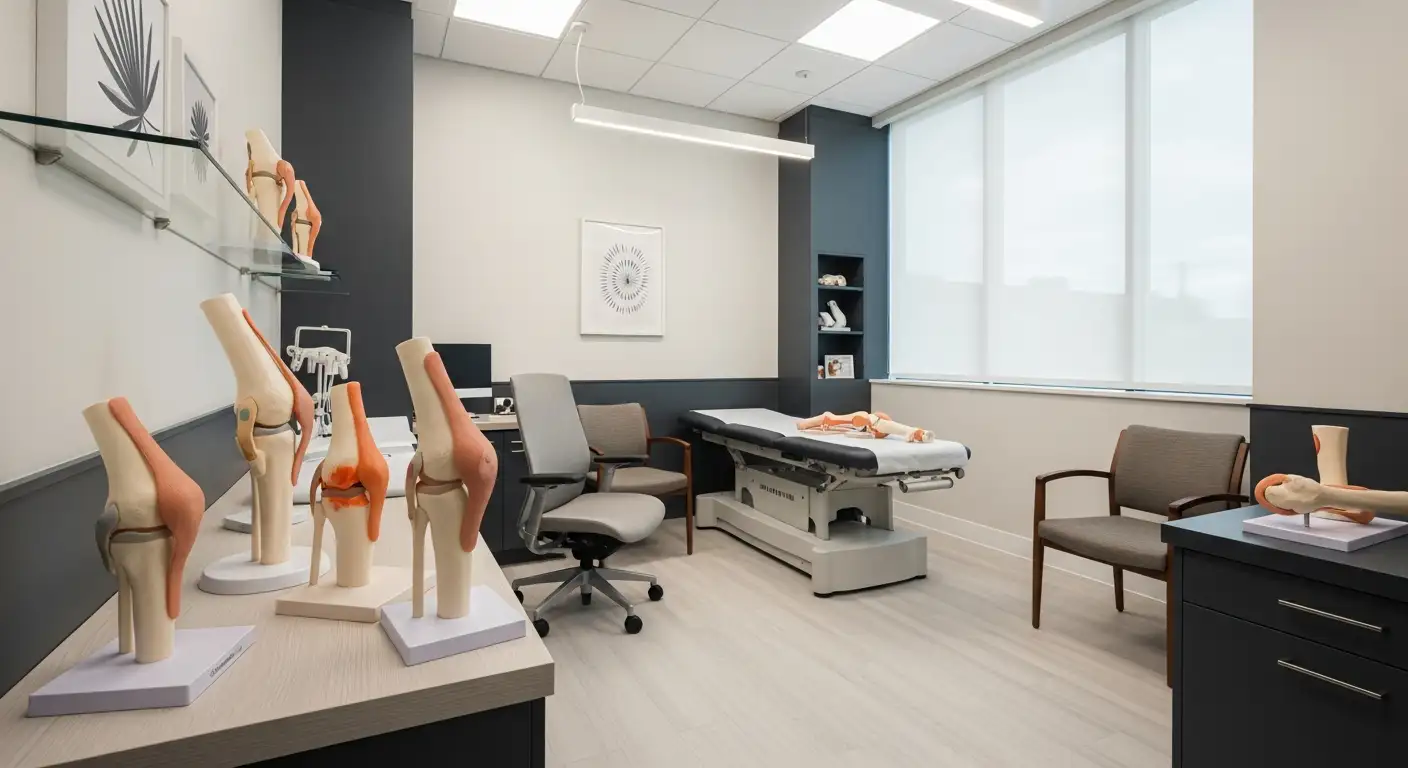Understanding the Link Between Stress and Osteoarthritis
Osteoarthritis (OA) is a degenerative joint disease that affects millions worldwide, often accompanied by chronic pain and decreased mobility. An often overlooked aspect is the significant impact of emotional and psychological stress on the progression and management of OA. This article explores effective strategies for coping with stress related to osteoarthritis, emphasizing the importance of a holistic approach that includes lifestyle modifications, support networks, and psychological interventions.
The Connection Between Stress and Osteoarthritis Symptoms
How does stress affect inflammation and pain in osteoarthritis?
Stress can significantly worsen osteoarthritis (OA) symptoms by increasing inflammation and intensifying pain. When a person experiences stress, the body releases stress hormones such as cortisol and adrenaline. While these hormones help in short-term situations, chronic stress keeps their levels elevated, which can lead to increased inflammation within the joints.
This heightened inflammatory response can accelerate joint deterioration and intensify pain sensations. Additionally, stress causes muscle tension around affected joints, which adds further pressure and discomfort. The cumulative effect of inflammation, muscle tension, and altered pain perception makes daily activities more difficult and painful for individuals with OA.
Managing stress through relaxation techniques, regular exercise, and social support can be effective strategies to reduce inflammation and improve quality of life.
What are the biological mechanisms linking stress and joint deterioration?
The connection between stress and joint health involves complex biological processes. Stress activates the hypothalamic-pituitary-adrenal (HPA) axis, leading to increased production of cortisol. Although cortisol is anti-inflammatory in the short term, prolonged elevation can disrupt immune regulation, resulting in excessive inflammation.
Furthermore, stress triggers the release of other chemicals like cytokines that promote inflammation and may contribute to joint tissue breakdown. This process can speed up cartilage loss and bone erosion in osteoarthritis.
Additional factors include the impact of stress on immune system functioning, which may falsely attack joint tissues or fail to repair damage efficiently, adding to joint deterioration.
How does the pain-stress cycle operate in osteoarthritis?
A key aspect of OA management is understanding the pain-stress cycle. When joint pain flares up, it causes emotional stress and anxiety. This emotional response activates the body's stress hormones, which in turn increase inflammation and muscle tension.
The increased inflammation and muscle tightness then amplify pain symptoms, creating a vicious cycle. As pain worsens, it leads to reduced activity and social isolation, which can deepen stress and emotional distress.
Breaking this cycle involves adopting strategies such as relaxation exercises, pacing activities, and seeking support. These approaches help lower stress levels, reduce inflammation, and ultimately decrease pain, enabling better disease management.
| Aspect | Effect on Osteoarthritis | Additional Notes |
|---|---|---|
| Stress hormones (cortisol) | Promote inflammation and joint damage | Chronic elevation impairs immune regulation |
| Muscle tension | Heightens joint pressure and pain | Relaxation techniques can alleviate muscle tightness |
| Immune response | Dysregulation can increase joint inflammation | Might lead to faster cartilage breakdown |
| Pain perception | Heightened sensitivity to joint pain | Psychological support can modulate pain experience |
| Mental health impact | Anxiety, depression worsen symptoms | Support groups and therapy aid in managing emotional health |
Understanding how stress interacts with biological processes in osteoarthritis underscores the importance of stress management techniques. By addressing emotional and physical stressors, individuals can potentially slow disease progression and enjoy better joint function.
Psychological and Emotional Impact of Living with OA

How does osteoarthritis affect you emotionally?
Living with osteoarthritis (OA) often extends beyond physical symptoms, significantly impacting emotional well-being. Chronic pain, fatigue, and limited mobility can lead to feelings of frustration and low mood. Many individuals experience a sense of grief over lost abilities and diminished independence, which can contribute to feelings of sadness or depression.
The persistent nature of OA also raises concerns about ongoing health, financial stability, and social roles. Anxiety about disease progression and stigma associated with physical limitations may cause anger or irritability. For some, the daily struggle to manage symptoms and maintain routines becomes a mental burden.
Addressing these emotional responses is crucial for effective disease management. Seeking support from healthcare providers, participating in counseling, and connecting with support groups can help patients process feelings of frustration, fear, and grief. Educating oneself about legal protections and workplace accommodations can alleviate fears related to employment and financial concerns.
By acknowledging and actively managing emotional health alongside physical symptoms, individuals with OA can improve their overall quality of life and better cope with the challenges posed by the condition.
Practical Lifestyle Modifications for Stress Reduction

What lifestyle modifications can help alleviate stress and manage osteoarthritis symptoms?
Managing osteoarthritis and reducing stress involve making targeted lifestyle changes that support joint health and promote emotional well-being.
Regular low-impact exercises such as walking, swimming, and water aerobics are highly beneficial. These activities help strengthen muscles around affected joints, improve flexibility, and decrease stiffness, which can lessen pain and reduce stress.
Maintaining a healthy weight is crucial, especially for weight-bearing joints like hips and knees. A balanced diet rich in nutrients like omega-3 fatty acids, antioxidants, fruits, vegetables, and whole grains can help reduce inflammation.
In addition to physical activity and diet, employing relaxation techniques such as mindfulness, meditation, yoga, and Tai Chi helps manage stress levels. These practices relax muscles, support mental health, and promote a sense of control.
Applying heat or cold therapies can temporarily relieve joint pain and inflammation. Using assistive devices like braces or canes to support joints can also decrease discomfort and prevent further injury.
Prioritizing quality sleep is essential. Establishing a regular sleep routine and creating a calming bedtime environment can improve rest and lower stress.
Avoiding smoking and limiting alcohol intake are important lifestyle choices, as both can worsen inflammation and interfere with healing.
By integrating these modifications—exercise, proper nutrition, relaxation practices, good sleep habits, and avoiding harmful substances—individuals can better manage osteoarthritis symptoms and significantly reduce stress, leading to a better quality of life.
| Lifestyle Aspect | Suggested Practice | Purpose |
|---|---|---|
| Exercise | Walking, swimming, water aerobics | Improve joint function, reduce stiffness |
| Diet | Omega-3-rich foods, fruits, vegetables, whole grains | Decrease inflammation, strengthen immune response |
| Sleep | Consistent routines, relaxation before bed | Enhance rest, reduce fatigue and stress |
| Stress Management | Meditation, yoga, Tai Chi | Lower muscle tension, emotional resilience |
| Joint Support | Use of braces, canes, assistive devices | Prevent joint strain and injury |
| Avoid Harmful Substances | Quit smoking, limit alcohol | Reduce inflammation, promote healing |
Implementing these lifestyle changes offers a practical way to lessen the emotional and physical burden of osteoarthritis, helping individuals lead more balanced, less stressful lives.
Effective Relaxation Techniques to Manage Stress and Pain

What techniques to reduce emotional and psychological stress related to osteoarthritis?
Practicing relaxation methods such as deep breathing, visualization, and muscle relaxation are proven strategies to manage stress associated with osteoarthritis. Deep breathing exercises involve slow, controlled breaths to calm the nervous system, while visualization uses mental images of peaceful scenes to reduce anxiety. Muscle relaxation techniques gently tense and then relax different muscle groups, helping to release tension and decrease physical discomfort.
Mindfulness practices, including meditation and focused breathing, teach individuals to stay present and reduce worry about pain or disease progression. These techniques can directly influence pain perception and improve emotional well-being.
Engaging in enjoyable activities—like hobbies, listening to music, or social outings—also plays an important role in emotional relief. Such activities help divert attention from pain, bolster mood, and provide a sense of normalcy and control.
By consistently applying these relaxation strategies, people living with osteoarthritis can better break the pain-stress cycle. While it takes regular practice to master these skills, their benefits include reduced inflammation, improved sleep, and enhanced mental resilience, all contributing to an overall better quality of life.
Additional tips for coping with osteoarthritis-related stress include being flexible with routines, seeking support from healthcare providers or support groups, and maintaining a balanced lifestyle with healthy eating and physical activity. Addressing both physical and emotional aspects of osteoarthritis is essential for comprehensive relief and improved daily functioning.
The Role of Physical Activity and Support Networks
People living with osteoarthritis often find that engaging in low-impact exercises can significantly help manage both symptoms and stress. Activities such as walking, swimming, or water aerobics improve joint flexibility, strengthen muscles supporting the joints, and reduce stiffness. Physiotherapy is also beneficial, providing tailored exercises and techniques to preserve joint function and reduce pain.
Assistive devices like canes, braces, shoe inserts, and shower chairs are practical tools that support daily activities, lessen joint stress, and help prevent further injury. These aids enhance mobility and independence, reducing frustration and emotional strain.
Beyond physical strategies, social support networks play a vital role in managing osteoarthritis-related stress. Support groups, whether local or online, provide a platform to share experiences, offer encouragement, and exchange coping techniques. Community programs and counseling services further help individuals navigate emotional challenges, offering tailored guidance and emotional relief.
Education and self-management programs are essential for empowering patients. Courses on osteoarthritis management teach pacing techniques, relaxation exercises, and healthy lifestyle choices. These programs foster a sense of control and encourage active participation in one's health care, ultimately decreasing anxiety and improving overall well-being.
Are there resources and support networks available for individuals coping with osteoarthritis stress?
Yes, numerous resources and support networks are available for individuals coping with osteoarthritis-related stress. Community groups like the Live Yes! Connect Group offer face-to-face peer support, while organizations such as the Arthritis Foundation provide helplines staffed by trained personnel, including Spanish-speaking experts, to offer guidance and emotional support. Additionally, support can be found through online communities, support groups focused on arthritis, and professional counseling, all of which help address emotional well-being. Self-management strategies such as mindfulness, relaxation techniques, and participation in evidence-based physical activity programs like Tai Chi and yoga are also recommended to reduce stress and improve quality of life. Overall, combining social support, educational resources, professional assistance, and lifestyle modifications can effectively help individuals manage stress associated with osteoarthritis.
The Importance of Psychological Support and Counseling

What role do psychological support and counseling play in managing osteoarthritis-related stress?
Managing osteoarthritis involves not only physical treatments but also addressing the emotional challenges that come with chronic pain and decreased mobility. Psychological support and counseling are crucial components of a comprehensive approach.
Counseling options, including cognitive behavioral therapy (CBT), help individuals recognize and adjust negative thought patterns that can worsen stress and pain perception. These therapies teach coping skills such as relaxation techniques, resilience-building, and mindfulness practices, which can significantly reduce feelings of frustration, anxiety, and depression.
Mental health support assists patients in adapting to physical limitations, promoting a positive outlook, and maintaining social connections, all of which are vital for emotional stability. By addressing emotional distress, counseling can reduce the adverse effects of stress hormones like cortisol, which are known to exacerbate inflammation and pain.
Building resilience through therapy helps individuals better manage setbacks and uncertainty related to their condition. It encourages proactive coping, such as pacing activities and prioritizing self-care, fostering a sense of control over their health.
Incorporating psychological support alongside physical management strategies creates a holistic treatment plan. This integrated approach not only relieves emotional burdens but also positively influences disease outcomes and quality of life.
Ultimately, counseling helps break the vicious cycle of pain and stress, aiding patients in achieving better mental well-being and aiding their overall health. Support from mental health professionals complements lifestyle modifications, medication, or alternative treatments, providing a well-rounded path to coping with osteoarthritis.
Health Professional Interventions and Self-Care Strategies

How do you cope with osteoarthritis?
Coping with osteoarthritis involves a multi-faceted approach aimed at reducing pain, improving joint mobility, and maintaining mental well-being. One of the primary strategies is engaging in regular low-impact physical activities like walking, swimming, or water aerobics. These exercises help strengthen the muscles around affected joints, increase flexibility, and reduce stiffness.
Maintaining a healthy weight is also vital, as excess weight puts additional stress on weight-bearing joints such as the knees and hips. Weight loss can significantly diminish pain and slow disease progression.
In addition to exercise and weight management, many individuals benefit from physical or occupational therapy to learn proper joint protection techniques and enhance function. Medications such as acetaminophen or NSAIDs are often used to manage pain, while injections like corticosteroids or hyaluronic acid may provide temporary relief in more severe cases.
When symptoms are advanced, surgical options—including joint replacement—may be necessary. Supportive devices like braces, splints, or shoe inserts can help support joints and improve daily functioning.
Complementary therapies, such as acupuncture, and self-care routines—like applying heat or cold packs—also contribute to symptom relief.
Ultimately, effective coping is rooted in understanding the condition, setting realistic goals, and actively participating in treatment plans. Education about managing osteoarthritis empowers patients to take responsibility for their health, make necessary lifestyle adjustments, and seek timely medical interventions when needed.
Supporting Your Journey to Better Joint Health and Well-Being
Coping with osteoarthritis-induced stress requires a comprehensive and proactive approach. By integrating lifestyle modifications, practicing relaxation techniques, utilizing support networks, and seeking psychological and medical support, individuals can significantly reduce stress and improve their quality of life. Empowering oneself through education and self-care, coupled with community and professional assistance, creates a resilient framework for managing this chronic condition. Remember, addressing emotional health is as crucial as managing physical symptoms — a holistic strategy is the key to thriving despite osteoarthritis.
References
- Stress and arthritis: Why it's important to manage your stress levels
- Osteoarthritis Self-Management - Exercise, Diet, Pain management
- Stress and Arthritis | UW Orthopaedic Surgery and Sports Medicine
- Lessen Your Stress for Joint Health - KOC Ortho
- Arthritis pain: Do's and don'ts - Mayo Clinic
- Osteoarthritis: 10 Tips for Self-Care at Home - WebMD
- 23 Strategies for Fighting Stress from Arthritis - CreakyJoints
- Self-Care for Arthritis: Five Ways to Manage Your Symptoms - CDC





